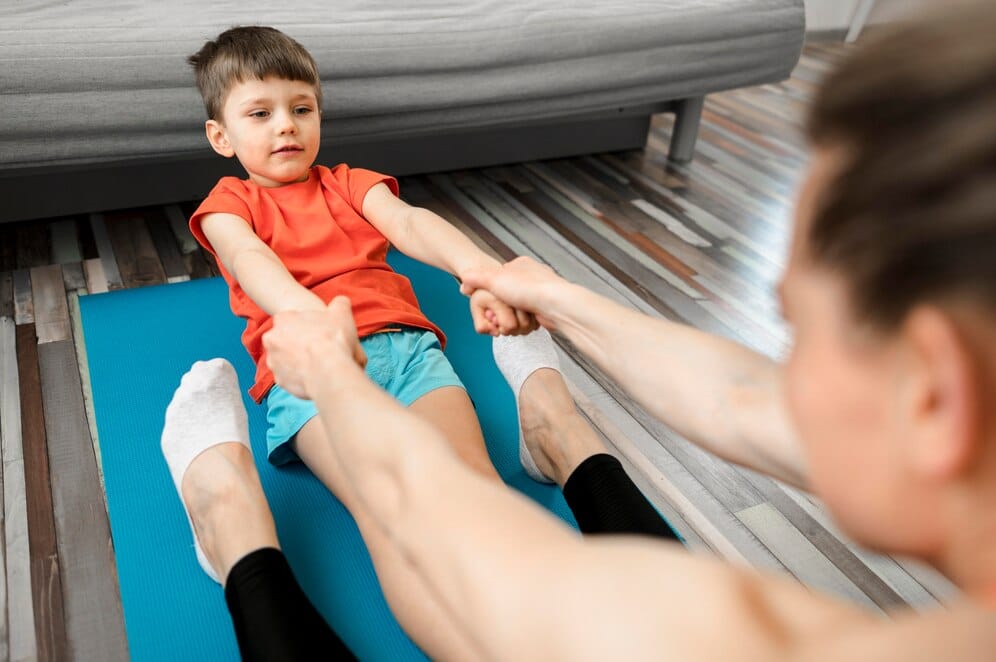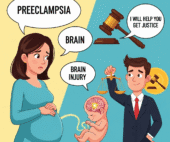When you think of Cerebral Palsy (CP), tight muscles and stiffness might come to mind. But for many children and adults with CP, the story starts differently with muscles that are too relaxed.
That condition is called hypotonia, or low muscle tone. It’s one of the earliest signs of CP in infants, and it can affect everything from sitting up to speaking. While it may sound mild, hypotonia in Cerebral Palsy often brings lifelong challenges. The good news? With early support, those challenges don’t have to define a person’s future.
What Is Hypotonia in Cerebral Palsy?
The Basics of Muscle Tone
Muscle tone is the slight tension your muscles keep even when you’re not moving so you can sit up straight or react quickly. Hypotonia means that baseline tension is too low. It’s not the same as muscle weakness, though the two often go hand-in-hand.
In CP, hypotonia is often noticeable in the first few months of life. Babies may feel “floppy,” have trouble lifting their heads, or struggle with basic movement milestones like rolling over or crawling.
How Hypotonia Affects Development
Movement, Balance, and Control
Low tone makes it harder to hold the body upright and steady. That affects posture, balance, and coordination and it makes everyday tasks like walking, eating, or grabbing objects a lot more difficult.
Kids with hypotonic CP often need more time to hit developmental milestones. Some may walk later than their peers, while others might need ongoing support with mobility into adulthood.
Speech and Feeding Challenges
Because hypotonia can also affect the muscles around the mouth and jaw, it may cause trouble with speech, chewing, and swallowing. For some children, learning to communicate or eat independently requires extra help sometimes with tools like speech therapy or feeding therapy.
Diagnosing Hypotonia in Cerebral Palsy
Doctors usually diagnose CP through a mix of physical exams, brain imaging, and developmental assessments. Hypotonia is often one of the first red flags that something isn’t developing typically.
The challenge is that hypotonia isn’t exclusive to CP it also shows up in other conditions like Down syndrome, muscular dystrophy, or metabolic disorders. That’s why getting an accurate diagnosis is crucial. It opens the door to tailored therapy, education plans, and lifelong support.
Managing Hypotonia in Cerebral Palsy
Therapy Is Key
There’s no magic cure for hypotonia, but there is a playbook and it starts with early, consistent therapy:
- Physical therapy helps improve strength, posture, and coordination.
- Occupational therapy teaches skills for everyday tasks like dressing or writing.
- Speech therapy supports clearer speech, better swallowing, and oral control.
These aren’t just checkboxes on a to-do list. They’re life-shaping tools that empower kids to participate more fully at home, at school, and in the community.
Supportive Equipment and Tools
Sometimes, devices like ankle braces, walkers, or adaptive seating make a world of difference. They don’t replace therapy they support it. Tools like these can improve alignment, reduce fatigue, and help prevent joint problems down the line.
In some cases, families also explore options like hydrotherapy or sensory integration to enhance results in a fun, low-stress setting.
Looking Ahead: What Life with Hypotonia Looks Like
Building a Foundation for Independence
Kids with hypotonic CP can thrive but they need the right foundation. That includes therapy, family support, accessible environments, and long-term planning. Some may go on to live independently, work, or attend college. Others may need ongoing care. Either way, the goal is the same: maximizing quality of life.
Lifelong Adaptation
Hypotonia doesn’t just disappear, but how it’s managed can evolve. Teens and adults may face new challenges or find new strengths. With regular re-evaluations, therapy plans can shift to meet changing goals, whether that’s driving, job training, or participating in adaptive sports.
FAQs: Hypotonia in Cerebral Palsy
What causes hypotonia in Cerebral Palsy?
It’s typically the result of brain damage that disrupts signals to the muscles. Unlike spastic CP, where signals are too strong, hypotonia is like a dimmed light the signal is weak or inconsistent.
How is hypotonia different from muscle weakness?
They’re related, but not the same. Tone is your muscles’ passive tension. Weakness is about active strength. Many people with hypotonia also have some degree of weakness, which can be improved with therapy.
Can hypotonia get better?
Yes with early intervention, children often improve dramatically. While the tone itself may not normalize, muscle control, balance, and confidence can all grow over time.
Is hypotonia in CP lifelong?
Usually, yes. But with ongoing care and adaptive tools, its impact can be significantly reduced.
Bottom Line: Hypotonia Deserves the Spotlight
Hypotonia in Cerebral Palsy doesn’t get as much attention as spasticity but it should. It’s one of the most common early signs of CP, and one of the most misunderstood. The earlier it’s identified, the better the outcome.
Families facing a hypotonia diagnosis aren’t alone. With strong support systems, consistent therapy, and adaptive tools, kids with hypotonic CP can build strength, gain confidence, and grow into their potential one step at a time.
👉 Fill out our FREE Consultation Form today to speak with a legal expert. Your case could make a difference.




